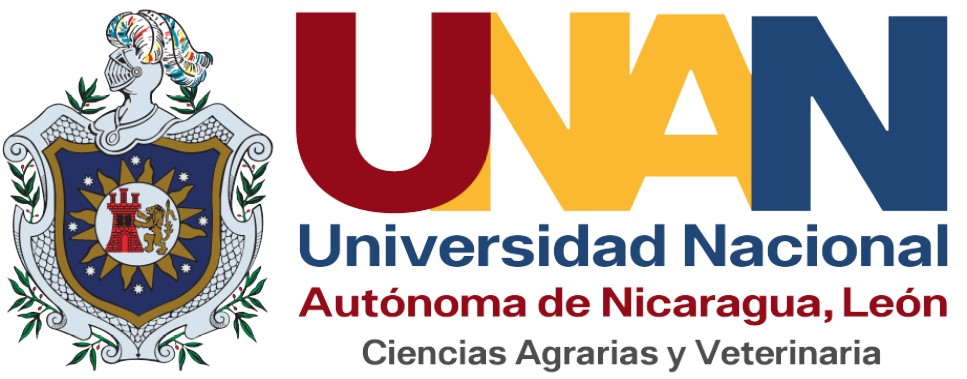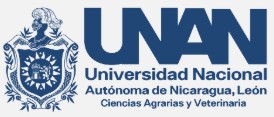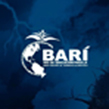In vivo estimation of the pig carcass by the ultrasonography method: An Approach to Eco-Intensification in Porcine Bioeconomics
DOI:
https://doi.org/10.5377/ribcc.v5i10.8966Keywords:
Prediction, Canal, Pigs, Muscle thickness, EcointesificationAbstract
In this study we analyze the relationship between subcutaneous fat thickness (EGS), muscle thickness (MS) and subcutaneous fat thickness and muscle thickness together (EGSM), measured with ultrasound at a single anatomical point of live pigs and more parameters important of the carcass . In our experiment we used hybrid pigs of the Pietrain, Landrace and Yorkshire breeds in an amount of 25 animals of both sexes. The results of the study suggest that the parameters of the channel composition analyzed here (Live weight, carcass weight, meat class A, B, C and specific cuts, loin, leg post and needle) are highly correlated with the thickness of subcutaneous fat measured with ultrasound on the last rib of the very long dorsal muscle on the left side of the live pig (r = 0.53 - 0.67). The multiple correlation of the linear regression prediction model between the parameters of the carcass and the thickness of the dorsal fat was (0.74) and the coefficient of determination showed sufficient predictability (R2 = 0.55). The linear regression prediction models of the carcass components with muscle thickness obtained low predictability (R2 = 0.23). Similarly in the regression model of subcutaneous fat thickness and muscle thickness together (R2 = 0.25). Among the most important correlations found are: right loin, class A meat (r = 0.80), live weight and whole carcass (r = 0.85) right shoulder and class B meat (r = 0.88) being this repetitive pattern in all correlations of ultrasonographic measurements and channel components.
Downloads
Metrics
References
López-Bote., A. Daza.: Effect of feeding system on the growth and carcass characteristics of Iberian pigs, and the use of ultrasound to estimate yields of joints. Meat science. 72, 2006, p 1-8. https://doi.org/10.1016/j.meatsci.2005.04.031
Sather, A. P., H. T. Fredeen, A. H. Martin.: Live animal evaluation of two ultrasonic probes as estimators of subcutaneous backfat and carcass composition in pigs. 1982; Canadian Journal of Animal Science P.82-114.
López G., Rubio M. (1998). Tecnología para la evaluación objetiva de las canales de animales de abasto. Vet.Méx. 29, 1998, p. 287.
Londoño J., Velásquez C. (2013): Clasificación y valoración de la calidad de canales porcinas en Colombia, monografía para optar al título de especialista en gerencia agropecuaria, 2013, p. 70.
Gérard D.(2001) Clasificación de las canales porcinas en Francia y en Europa. Memorias 9° Seminario Nacional de Desenvolvimiento de Suinocultura. InstitutTechnique du Porc Francia, 2001 25-27 de abril de 2001. P 6-9.
Jogal S.M, Kennedy B.W: (1987). Evaluación de los equipos de medición eléctricos en la predicción de la composición de la canal en cerdos vivo, animal production, 1987, 45, P 97-102
Mejía G.C.A.; Montaño B.M.; Velázquez M.P.A. y Cuarón, I.J.A.: Estimación in vivo del rendimiento de las canales porcinas mediante ultrasonografía. Téc. Pecu. Méx. 1999, 37:2. P 31.
McLaren D.; McKeith F.; Novakofski J. Prediction of CarcassCharacteristics at Market Weightfrom Serial Real-Time Ultrasound Measures of Backfat and Loin Eye Area in the Growing Pig. Journal of Animal Science.67, 1989, P, 1657-1667.
Swantek P.; Crenshaw J.; Marchello M.; Lukaski H.(1992). Impedancia bioeléctrica: un método no destructivo para determinar la masa libre de grasa de cerdo de mercado y cerdo cadáveres vivos. J Animsci. 70.1992. P 77-169.
Boland M.; Foster K.; Schinckel.; Wagner J.; Chen W.; Berg E.; Forrest J.(1995) Técnicas de evaluación de la canal alternativa: Las diferencias en las predicciones de valor. J anim sci.73, 1995. P 44.
Ordenes L.:(2005). Evaluación del espesor de la grasa dorsal y peso vivo en jabalí puro y en mestizos desde las 17 hasta las 39 semanas de edad, memoria presentada a la facultad de medicina veterinaria de la universidad de concepción para optar al título de médico veterinario; Chillan-Chile, 2005, P 6.
Higbie A.; Bidner T.; Matthews J.; Southern L.; Page T.; Persica M.: Sanders M.; Monlezun C. (2002). Prediction of swinecarcass composition by total body electrical conductivity. J. Anim. Sci. 2002. 80 P.113.
Youssao I.; Verleyen V.; Verleyen P.: Prediction of carcass lean content by real-time ultrasound in Pietrain and negative stress Pietrain. Animal Science. 2002, 75 P 25. https://doi.org/10.1017/S1357729800052796
Definición canal porcina [en línea] http://www.uco.es/zootecniaygestion/ [citado el 20 de marzo de 2015]
Escáneres de ultrasonido [citado en línea] http://www.cancerquest.org/index.cfm?page=3422&lang [citado el 19 de marzo de 2015]
Zúniga-González, C. A., Durán Zarabozo, O., Dios Palomares, R., Sol Sánchez, A., Guzman Moreno, M. A., Quiros, O., & Montoya Gaviria, G. D. J. (2014). Estado del arte de la bioeconomía y el cambio climático ISBN 978-99924-28-39-9, ISBN 978-99924-28-40-5, pp. 20-329) Editorial Universitaria UNAN León.
Universo porcino (2015). Consumo mundial de carne porcina [en línea] http://www.aacporcinos.com.ar [citado el 23 de marzo de 2015]
Central American Data (2015). El principal productor y consumidor mundial de carne [en línea] http://www.centralamericadata.com [citado el 20 de marzo de 2015]
UCO (2015). Definición canal porcina [en línea] http://www.uco.es/zootecniaygestion/ [citado el 20 de marzo de 2015]
ESCI (2015).Escáneres de ultrasonido [citado en línea] http://www.cancerquest.org/index.cfm?page=3422&lang [citado el 19 de marzo de 2015]
Walder D N, Dikeman M E, Schalles R R, Olson W G, Houghton P L, Unruh J A and Corah L R 1992 Validation of Real - time Ultrasound technology for Predicting Fat thicknesses, Longissimus Muscle Areas and Composition of brangus bulls from 4 Months to 2 Years of Age. Journal of Animal Science 70: 3044 – 3054, disponible en: http://www.journalofanimalscience.org/content/70/10/3044.full.pdf
Dios Palomares, R. , Alcaide, D., Diz, J., Jurado, M., Prieto, A., Morantes, M., & Zúñiga, C. A. (2015). Análisis de la eficiencia de sistemas agropecuarios en América latina y el Caribe mediante la incorporación de aspectos ambientales. Revista Cientifica de la Facultad de Ciencias Veterinarias de la Universidad del Zulia, 25(1), 43-50.
Sloniewski, P., & Zielinski, P. (1997). Remote effect of brain retraction on regional cerebral blood flow and cerebrovascular reserve on single photon emission computed tomography. Surgical Neurology, 48(5), 511-513.
Demo P, Krška P, Poltársky J and Borecký A 1993 The use of an echocamera for in vivo prediction of some carcass characteristics in pig. Živoc 38: 645 - 654.
Downloads
Published
How to Cite
License
Copyright (c) 2019 IBERO-AMERICAN JOURNAL ON BIOECONOMY AND CLIMATE CHANGE

This work is licensed under a Creative Commons Attribution-NonCommercial-ShareAlike 4.0 International License.
Copyright © 2025 Rev. iberoam. bioecon. climate change. National Autonomous University of Nicaragua León (UNAN-León), Knowledge Area of Agrarian and Veterinary Sciences / Specific Area of Agroecology and Agribusiness / Center for Research in Agrarian Sciencies. Academic Directorate. Research Department. Publication and scientific events Unit.












 EDITORIAL
EDITORIAL e-ISSN
e-ISSN


 COPYRIGHT
COPYRIGHT This work is licensed under a Licencia Internacional
This work is licensed under a Licencia Internacional 












